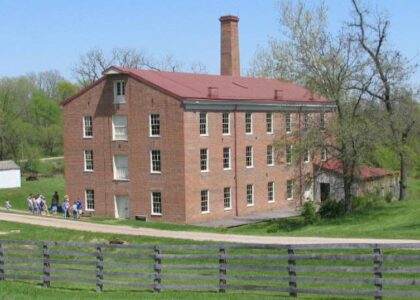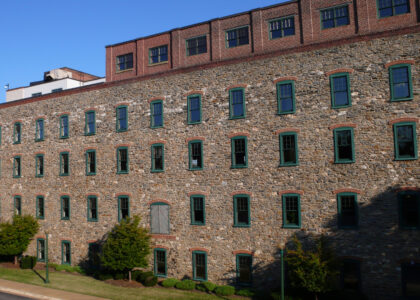Welcome to the historic lime kiln in Red Wing, Minnesota, a relic of a bygone industrial era. This kiln, known as the G.A. Carlson Lime Kiln, was built in 1882 and stands as a testament to the industrious spirit of the late 19th century. Nestled on the edge of He Mni Can-Barn Bluff, it is a vivid reminder of when limestone was a cornerstone of local industry.
Gustavus Adolphus Carlson, a notable local entrepreneur, operated this kiln along with 11 others in the area, making Red Wing a hub of limestone production. The kiln’s primary function was to transform raw limestone into quicklime, a vital component in building materials like mortar and plaster. This transformation process was labor-intensive and required firing the limestone at temperatures reaching 2,000 degrees Fahrenheit.
The operation of the kiln involved a robust workforce. Crews of 40 to 60 men worked tirelessly to quarry, cut, and transport the stone. The Chicago, Milwaukee, and St. Paul Railroad played a crucial role, with a spur line directly in front of the kiln to facilitate the easy loading of lime onto railcars. However, the work was not without its hazards, as dynamite was used to extract limestone, causing loud explosions that could be heard miles away.
Despite its booming start, the lime industry in Red Wing faced challenges. By 1908, public opposition to the defacement of He Mni Can-Barn Bluff and a declining lime market led to the cessation of quarrying activities. The bluff was later donated to the City of Red Wing in 1910 and is now a cherished public park.
The G.A. Carlson Lime Kiln was recognized for its historical significance when it was added to the National Register of Historic Places in 1976. Today, it stands as a symbol of the area’s rich industrial past and the community’s commitment to preserving its unique history.
As you stand here, imagine the bustling activity that once surrounded this site and how it contributed to the growth and development of Red Wing, providing essential materials for cities as far off as St. Paul and Minneapolis. The kiln is not just a monument of stone but a chapter of the human endeavor etched into the landscape of He Mni Can-Barn Bluff.






